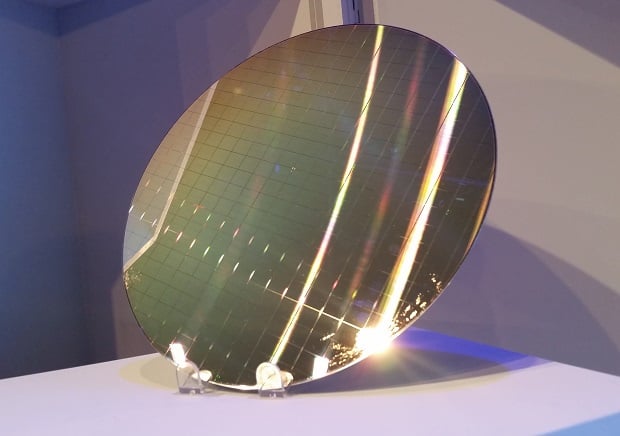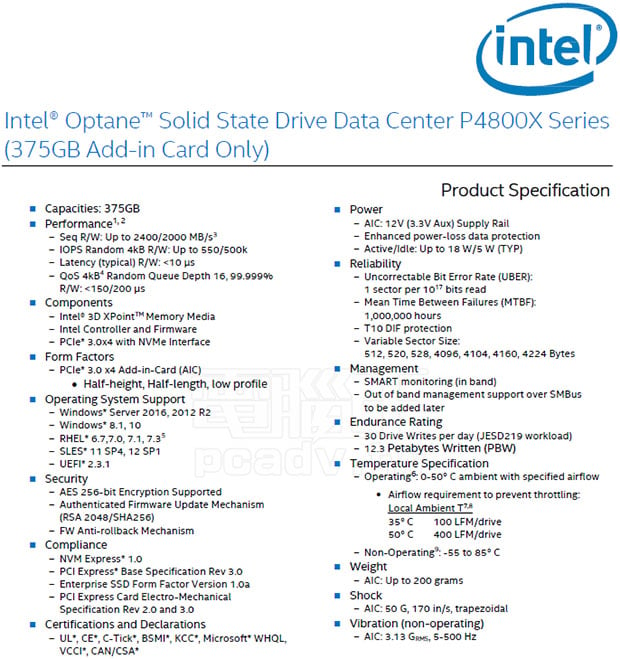Intel Optane SSD Specs Out In The Wild With Impressive Random IOPs Throughput And Super Low Latency

If there's one downside to following the rapid progression of technology, it's that we're often stuck waiting for the next best thing to arrive. That couldn't be any more true than it is with memory and storage technologies. The number of times we've talked about "breakthroughs" in memory are too numerous to count, so when we first wrote about Intel and Micron's joint 3D XPoint memory two summers ago, we knew we'd be in for a bit of a wait.
3D XPoint (now called Optane) is soon reaching market availability, but we are still in for a long wait on Intel and Micron's promises made two years ago that the tech would be 1,000x faster than NAND with 1,000x the endurance.

So what's Intel's first Optane product, the SSD DC PP4800X, going to bring to the table when it launches later this year? From the start, it appears that just a single model will be available, weighing in at 375GB. To be honest, that relatively low capacity seems a bit paltry, but don't fret; 750GB and 1.5TB models will be en route at a later date.
With the 375GB model, users will be able to expect reads of 2,400MB/s and writes of 2,000MB/s. The read value doesn't break records, but the 2GB/s writes would put the drive near the top of the performance ladder.
Where the SSD DC P4800X truly shines is with its unparalleled latencies and write IOPS performance. Intel's current flagship enterprise SSD boasts latencies of 20 microseconds, whereas the first Optane drive whittles that down to 10 microseconds. If you're not sure what a microsecond is, Wikipedia puts it perfectly: "One microsecond is to one second as one second is to 11.574 days."

Furthermore, the P4800X features read IOPS performance of 550,000, which is standard fare at the top of the market. However, it shines in the write performance: whereas most drives of this caliber sit at around 200K write IOPS, the P4800X more than doubles that to hit 500K.
As you might imagine, the P4800X is not going to be an affordable drive when it is released. While the promises Intel shared with us two years ago are not going to be fulfilled with this first release, we have reason to be excited for the future of the technology.

